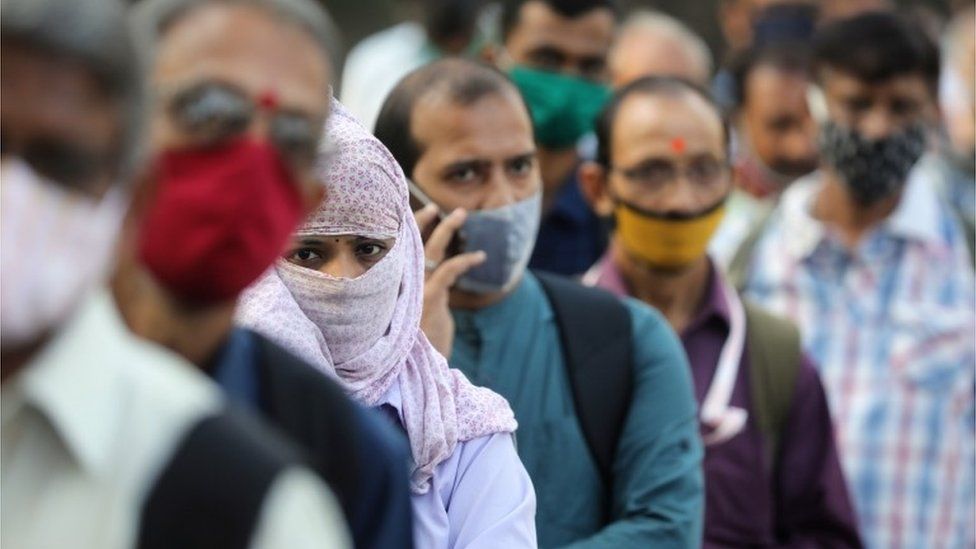India is now in the grip of the third wave of the CoVID-19 pandemic. The official data just released by the ministry of statistics and programme implementation offer a grim picture of the country’s economy ravaged by the pandemic. As projected by government statistics, India’s economy contracted by 7.3% in the April-June quarter of this fiscal year. This is the worst decline ever observed since the ministry had started compiling GDP statistics quarterly in 1996. Last year, the government strategy to deal with the pandemic was guided by the slogan of ‘life over livelihoods.’ The initial lower intensity of the scourge emboldened the government to go as far as to declare, in January 2021, that victory over CoVID-19 had been achieved. This betrayed immature and misplaced optimism. Now, again the third wave consisting primarily of the Delta variant coupled with the Omicron variety is spreading its tentacles and sweeping over the country. Many Indian states, which were caught unprepared last year, have already started imposing restrictions and partial lockdowns posing a threat to economic recovery. The second threat to economic revival is the vaccination rates. If a major portion of the labour force is not inoculated, coronavirus is in all likelihood going to disrupt real economy. The current lockdowns have scared the immigrant labour force and due to their terrible past experience many have already started heading home. This is bound to affect national productivity.
The second wave brutally exposed the vulnerabilities of India’s $2.9 trillion economy which remained shuttered during the lockdown period, except for some essential services and activities. As shops, eateries, factories, malls, transport services, business establishments were closed, the lockdown alarmingly slowed down the economy. The informal sectors of the economy, already crippled by Demonetization in November 2016, have been worst hit by the pandemic. India’s GDP contraction during April-June could well be above 10% if the informal sectors are considered. The country’s economic growth is largely driven by private consumption and investments. All the major sectors of the economy were hit except agriculture. The Indian economy was facing headwinds even before the arrival of the second wave. As statistics suggest, the contraction of the economy would continue in the next four quarters and a recession appears to be inevitable. The surveys conducted by the Centre for Monitoring Indian Economy show a steep rise in unemployment rates, in the range of 7.9% to 12% during the same April-June quarter of 2021. The economy is having a knock-on effect with MSMEs closing down their businesses. Millions of jobs have been lost permanently and this has dampened consumption. The government need to spend billions of dollars to fight the health crisis and help fast economic recovery from the pandemic-induced recession. Whether the government is capable to foresee the catastrophe building up and whether it has deep enough pockets to handle it is debatable.
The GDP growth had crashed 23.9% in response to the Centre’s no notice lockdown. As of now, India’s GDP growth rate is likely to be below 10 per cent. The Controller General of Accounts data for the Centre’s fiscal collection indicate a gross-tax revenue (GTR) of Rs 20 lakh crore and the net tax revenue of Rs 14 lakh crore for 2020-21. The tax revenue growth will be 12 per cent, which would mean the projected gross and the net tax revenues for 2020-21 would be Rs 22.7 lakh crore and Rs 15.8 lakh crore respectively.
This is no solace at all. With many states resorting to localised lockdowns to hide their incompetence to build the health infrastructure to cope up with the pandemic, the hospitality sector is facing a repeat of 2020. This sector that includes businesses such as travel agencies, restaurants, hotels, bars, clubs and more has contributed to a large portion of India’s annual GDP. But it has been hit hard by restrictions and curfews imposed by the states. Some of the sectors such as tourism that normally contributes 7 per cent to the GDP, the automobile industry and real estate that contribute immensely to employment opportunities are in equally bad shape. Aviation is also taking a hit as people are scared to step out of their homes in the second and third waves.
The pandemic has, however, not affected India’s fiscal deficit and disinvestment target much. Union Finance minister Nirmala Sitharaman announced a fiscal deficit target of 6.8% for 2021 to 2022. India’s fiscal deficit for 2020-21 rose to 9.5% of GDP as against 3.5% projected earlier. The finance minister has pegged fiscal deficit at 4.5% of GDP by 2025-26 by increasing tax revenues through greater tax compliance and monetisation over the years. All these figures are, undoubtedly, government manufactured and must not be taken as projecting complete honesty.
The upshot of all the statistics and projections is that if the outbreak worsens over time, or if the case numbers are very high, India’s economic and fiscal recovery will not be possible any time soon. The government need to seriously ramp up vaccination, build up health infrastructure on a war footing and refrain from simply increasing taxation to fill up its coffers.
Taking shortcuts like imposing frequent restrictions and partial lockdowns that throw normal life out of gear may not be the only solution to this mega problem.
